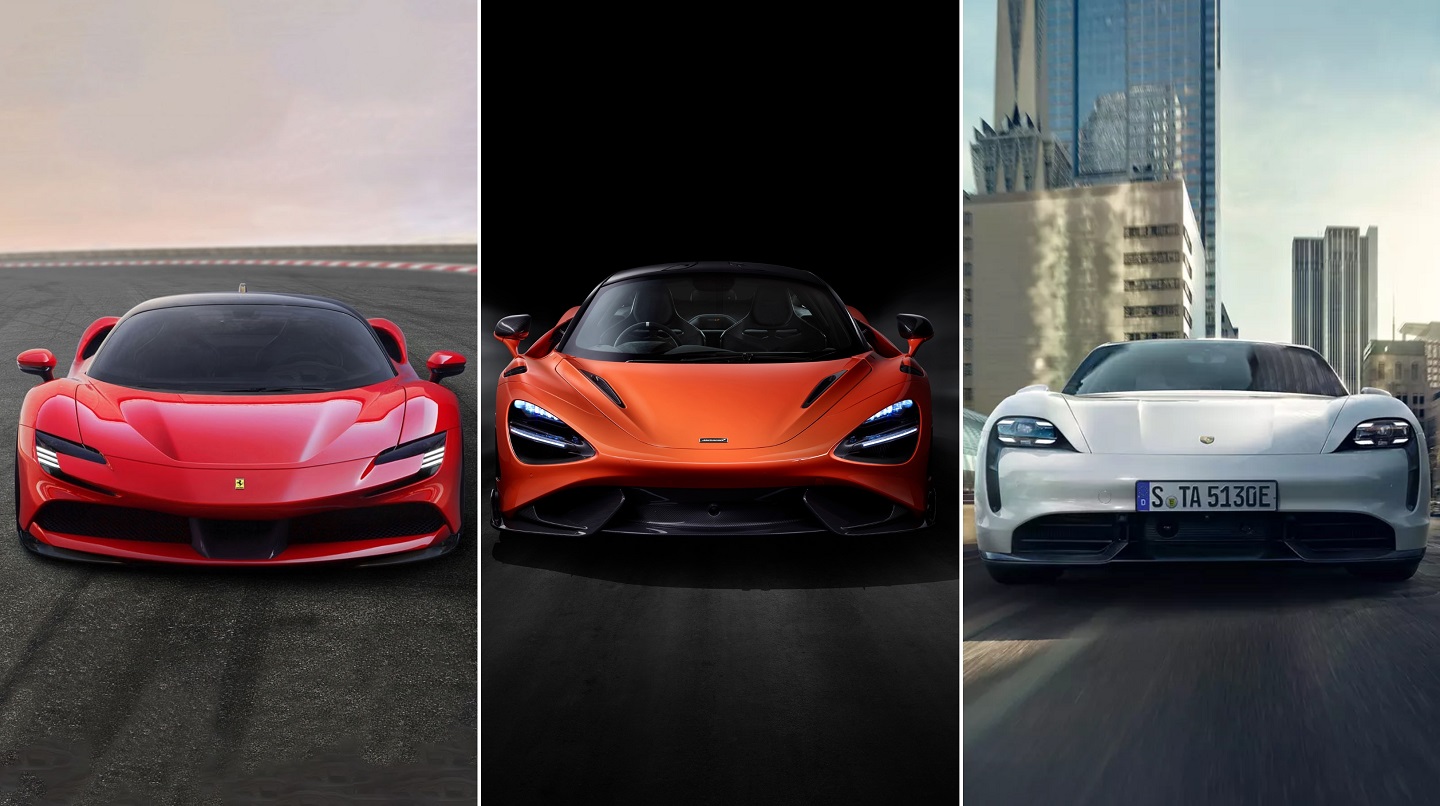
The Ferrari SF90 Stradale, McLaren 765LT and Porsche Taycan (Photo: Ferrari, McLaren, Porsche)
The local automotive industry is showing signs of post-Movement Control Order recovery with a series of launches and showroom openings. We round up three debut vehicles — coincidentally, they are petrol-powered, hybrid and all-electric — unveiled in KL recently should you be in the market for a powerful, performance-driven new ride.
Italian mastery
As Ferrari’s first series production PHEV (plug-in hybrid electric vehicle), the all-new, all-powerful SF90 Stradale turns the page to a whole new chapter in the history of the Italian marque. Ferrari’s first hybrid production series model received the 2020 Red Dot: Best of the Best Award and was also the only car to have been bestowed one of 75 Gold Awards at the prestigious iF Design Awards 2020.
Its name, SF90, pays tribute to the 90th anniversary of the foundation of Scuderia Ferrari, while Stradale — which translates into Italian for “road” — underscores the distinct link that has always existed between Ferrari’s track and road cars. A brilliant encapsulation of the most advanced technologies developed in Maranello, the SF90 Stradale is also the perfect demonstration of how Ferrari immediately transitions the knowledge and skills it acquires in competition to its production cars.
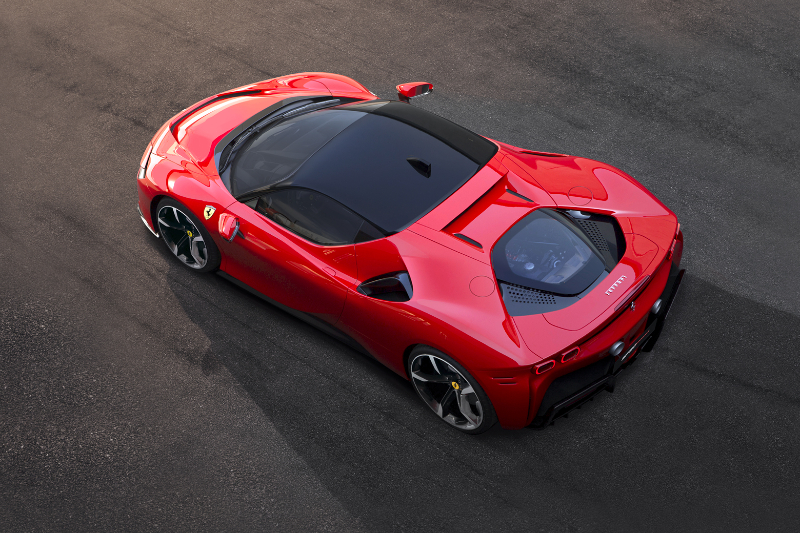
The new model delivers unprecedented performance for a production car, with figures such as 1,000 cv, a weight-to-power ratio of 1.57 kg/cv and 390 kg of downforce at 250kph elevating the SF90 Stradale to the top of its segment. The SF90 Stradale has a 90° V8 turbo engine capable of delivering 780 cv, the highest power output of any eight-cylinder in Ferrari’s history. The remaining 220 cv is delivered by three electric motors — one at the rear, known as the MGUK (Motor Generator Unit, Kinetic) due to its derivation from the Formula 1 application, located between the engine and the new eight-speed dual-clutch transmission on the rear axle, and two on the front axle.
This sophisticated system does not, however, make for a more complicated driving experience. Quite the opposite, in fact: The driver simply has to select one of the four power unit modes, and then just concentrate on driving. The sophisticated control logic takes care of the rest, managing the flow of power between the V8, the electric motors and the batteries. The SF90 Stradale is also the first Ferrari sports car to be equipped with 4WD, a step necessary to allow the incredible power unleashed by the hybrid powertrain to be fully exploited, ensuring the car sets the new benchmark for standing starts: 0 to 100kph in 2.5 seconds and 0 to 200kph in just 6.7 seconds.
The SF90 Stradale’s architecture, in which the cabin is located ahead of the mid-mounted engine, provided the team at the Ferrari Styling Centre the ideal platform to craft a genuine supercar of impeccable proportions. More compact overhangs and the frontward-shift of the cabin have created a cab-forward-type architecture that emphasises the fact that the engine is mid-mounted. Combined with a more curved windshield, slender A-posts and a wide track, this creates a beautifully proportioned car with sleeker volumes.
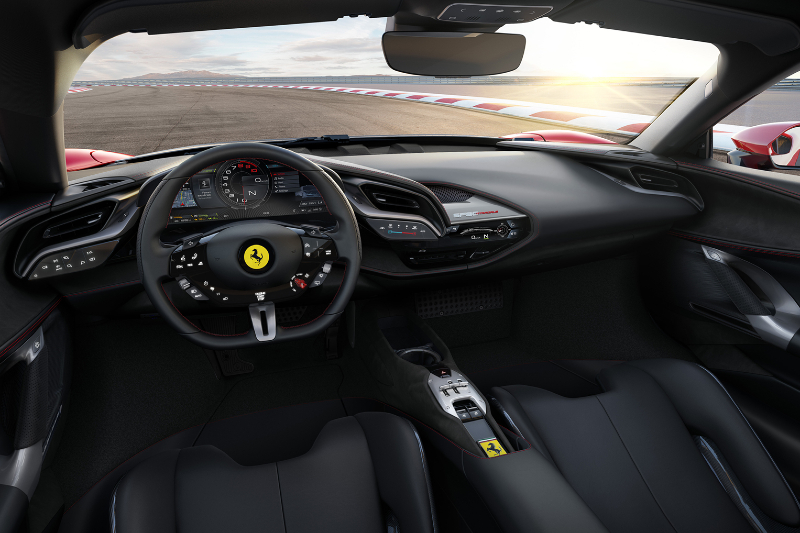
The compact bubble-shaped cabin has an aeronautical cockpit feel and the fact that it has been shifted so far forward is further emphasised by the geometry of the two body-coloured rear flying buttresses that enclose the rear. The headlights, rather than the usual L-shaped look, now feature a slender slit design integrated with the brake air intakes — this results in a characteristic C-shape that lends the front of the car an original and futuristic appeal. In a first for a Ferrari, the SF90 Stradale uses matrix LED headlight technology to improve visibility in all driving conditions, thanks to active beam control.
Inside, the central instrument cluster comprises a single 16in digital HD screen that curves towards the driver, making it easier to read and to emphasise the F1-style wrap-around cockpit effect. This is the first time this type of screen has been adopted in a production car. The car’s steering wheel also ushers in a new era for the marque with the introduction of a series of touch commands that allows the driver to control virtually every aspect of the car without ever taking his hands off the wheel. The compact but functional pad on the right-hand spoke allows the driver to navigate the central cluster screens, while voice and cruise controls are on the left-hand spoke.
British style
To properly appreciate McLaren’s new 765LT, we need to first examine the history of the British-born carmaker’s Longtail legend. In 1995, McLaren was neck-deep in the world of Formula 1 while also participating in many gran touring races. While it was originally created for road use only, the McLaren F1 GTR Longtail featured many racing technologies and designs. Eventually, its creator Gordon Murray agreed to modify it into a racing car, so it could compete in the FIA GT Championship.
For the next decade, the F1 GTR Longtail competed in over 120 races, including the 24 Hours of Le Mans, and is considered to be the granddaddy of the entire Longtail series. The new 765LT is the fifth in the line, and benefits from years of R&D to create a car that is lighter, more powerful and more engaging than ever.
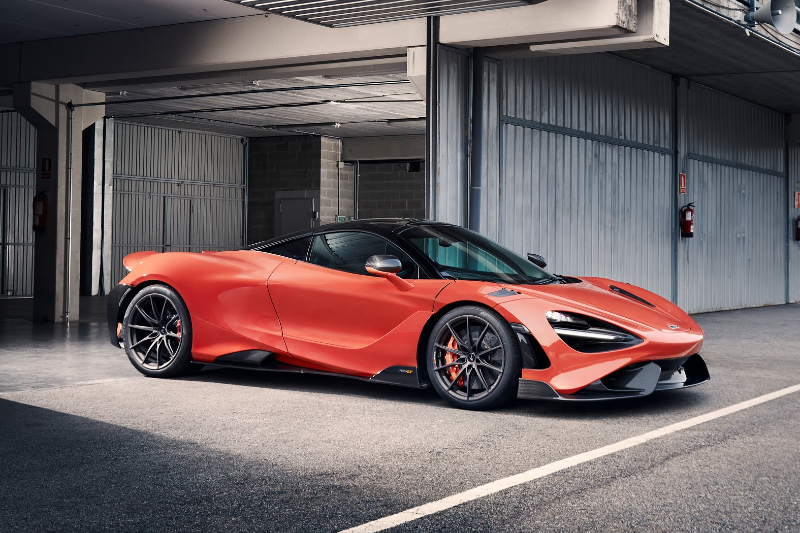
The car’s performance more than lives up to the expectations set by its looks. A four-litre twin-turbocharged V8 McLaren M840T engine features an LT-specific forged aluminium piston, a three-layer head gasket used in the McLaren Senna and ultra-efficient carbon-coated followers in the valve train. Peak power is 765 PS (755bhp) at 7,500 rpm and a maximum torque of 800Nm at 5,500 rpm. The extraordinary performance of the 765LT is summarised by its impressive benchmark acceleration statistics — 0 to 100kph in 2.8 seconds, and 0 to 200kph in 7.2 seconds.
To properly hear that engine growl, the car is equipped with a unique, full-titanium, quad-exit exhaust pipe. The LT soundtrack the car produces is a function of its increased diameter, while the relative position of each pipe to others delivers the precise harmonic content required to create a high-pitched, engaging note that becomes sharper as it builds to an incredible crescendo at high revs.
The aerodynamic performance of the car is key to its performance on the track and also influences the way it behaves when it shifts to higher speeds on the road. The extended front splitter and elongated active rear wing work in conjunction with the carbon fibre floor, unique door blades and extended rear diffuser to deliver aerodynamic downforce 25% greater than the 720S, for example.
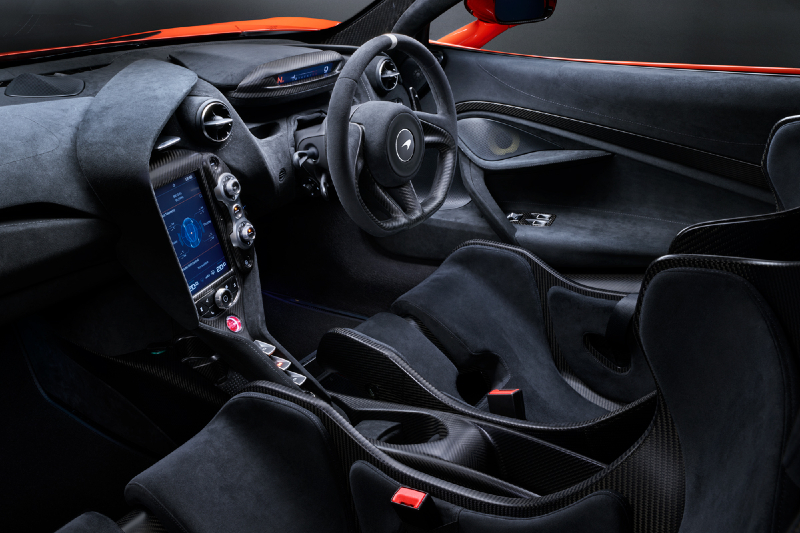
The cockpit of the 765LT is a blend of generous interior spaces and excellent ergonomics, with racetrack efficiency and supercar luxury coming together quite beautifully. This creates an overall ambience of cutting-edge technology and high-level craftsmanship in an environment defined by its focus on the driver. A debossed 765LT logo on the fascia and a numbered LT dedication plaque further underscore its exclusivity.
The primary hub for driver convenience, comfort and connectivity functions is an 8in central screen that works in conjunction with a folding driver display to provide an integrated driver information platform. Depending on whether you favour convenience features more than maximum weight-saving options, there are ample choices from the car’s equipment portfolio — for example, door stowage pockets and central tunnel with lockable sections in lieu of the standard lightweight nets and carbon fibre tunnel. Additional convenience options include a high-definition reverse camera and a 360° park assist system.
You do not pay top dollar for a car like this to blend in, and the standard colour choices reflect this. There is a total of 17 exterior hues to choose from, including two unique to the new LT. A further 13 shades are in the MSO Defined range available through the McLaren Special Operations, while beyond this, there is the opportunity to request any colour that is technically possible through an MSO Bespoke commission.
German efficiency
German marque Porsche has rolled-out its most powerful car yet, the all-electric Taycan, living up to its promise as delivered by the Mission E concept car in 2015. This four-door sports sedan offers a powerful combination of Porsche’s renowned performance and state-of-the-art technology with everyday usability. Three models — the flagship Taycan Turbo S (RM1,195,000), Taycan Turbo (RM999,000) and Taycan 4S (RM725,000) — were unveiled at the new Porsche Centre in Ara Damansara, Petaling Jaya.
Resembling an elongated, four-door version of the 911, the Taycan’s aesthetic is very futuristic, typical of what you might expect of an electric car, with smooth, sleek lines that extend from the front, down the sides and at the rear. Inside, the dashboard is adapted from the 911 and features a free-standing 16.9in curved instrument cluster, while a central 10.9in infotainment display forms an integrated glass band. The car is nice and low, and battery recesses in the rear footwell ensure supreme comfort for backseat passengers.
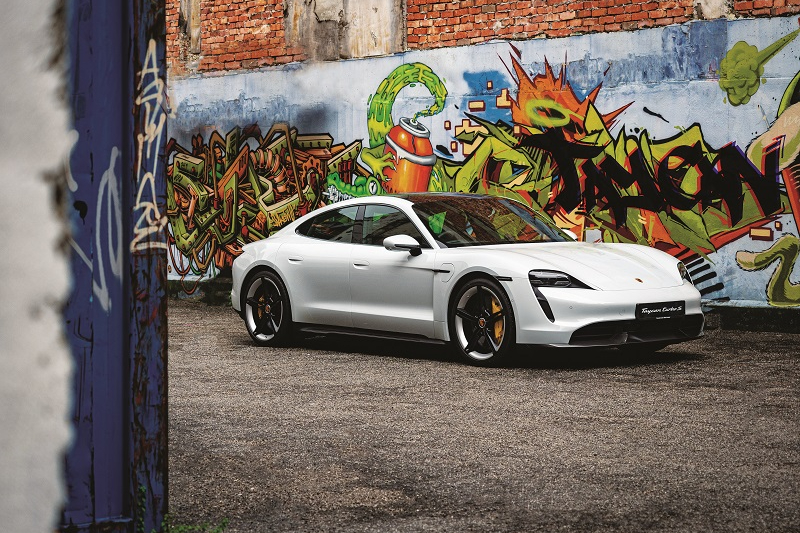
The Taycan is based on a new J1 platform, and powered by a 93.4kWh lithium-ion battery between the two axles, each with a motor attached, four-wheel steering and a rear-mounted two-speed gearbox, allowing the car to reach its accelerative potential from take-off.
The flagship Taycan Turbo S can generate up to 560kW (761 PS) of power in combination with Launch Control, and the Taycan Turbo up to 500kW (680 PS). The Taycan Turbo S generates up to 1,050Nm of torque and accelerates from 0 to 100kph in 2.8 seconds, while the Taycan Turbo reaches maximum torque of 850Nm and completes this sprint in 3.2 seconds. The Turbo S has a range of up to 412km, while the Turbo has a range of up to 450km. The top speed of both all-wheel-drive models is 260kph. Meanwhile the Taycan 4S reaches the century sprint in four seconds and a top speed of 250kph, with an electrical range of up to 407km with the standard Performance Battery and 463km with the Performance Battery Plus.
The Taycan is the first production vehicle with a system voltage of 800 volts instead of the usual 400 for electric cars. This is a particular advantage for Taycan drivers on the road: In just over 36 minutes, the battery can be fully recharged using the available 175kW direct current (DC) chargers from the high-power charging network for a range of over 400km across all models (according to the Worldwide Harmonised Light Vehicle Test Procedure). The overall capacity of the Performance Battery Plus is 93.4kWh and it can conduct higher currents, thus speeding up the charging process significantly. Taycan drivers can comfortably charge their cars with up to 11kW of alternating current (AC) at home.

An entire leather-free interior is fitted as standard for the Taycan Turbo S and Taycan Turbo, and is an available option for the Taycan 4S. Interiors made from innovative recycled materials underscore the sustainable concept of the electric sports car. The cars are also manufactured in a carbon dioxide-neutral production facility. Porsche since last year has required suppliers to meet environmental and human rights compliance standards and, as part of the Responsible Minerals Initiative (RMI), strives to ensure that the entire value chain for raw battery materials is both socially and environmentally sustainable.
On the topic of sustainable purchase, Porsche Malaysia is making it really easy to own a Taycan by offering intelligent charging solutions for owners, with equipment that includes a 22kW Porsche Mobile Charger Plus and the Porsche Home Energy Manager. Outside of public AC charging stations, you can also power up the car at any Porsche Centre in Malaysia, where fast-charging stations can deliver a full charge in just 36 minutes. The fast chargers are being deployed ahead of deliveries of the Taycan, scheduled to begin in the first quarter of 2021.
This article first appeared on Oct 12, 2020 in The Edge Malaysia.


